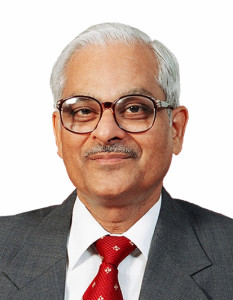What are some key global trends in the water–energy challenge?
In recent decades, the combination of more users, with more uses of water, has transformed the traditional water–energy ‘ladder’ that underpins all human, social and economic development into an ‘escalator’.
Freshwater supplies are unevenly allocated across the globe. The majority of demand growth will be in emerging and developing economies who are already experiencing water and energy security challenges.
By 2050, the UN estimates that half the world’s population will live in nations that are short of water. Moving water to people and controlling supply will become even bigger issues in the years to come.
What trends are specific to developing countries such as India?
Developing countries such as India continue to battle with scarcity of water for energy as well as for human consumption. This issue will become an even bigger challenge over the next few years, not only in India but also in the Middle East and Africa. Water quality is another increasingly acute problem. This is in spite of the fact that India is one of the 10 countries which together hold 60% of the world’s fresh water resource.
According to a recent US government report, droughts and the scarcity of freshwater, along with floods, may cause significant global conflicts. While the risks in the next 10 years are minimal, beyond 2022, the use of water as a weapon of war or as a tool of terrorism will become more likely, particularly in South Asia, the Middle East and North Africa.
Water is needed for both energy and for people and agriculture. These are competing needs especially in areas facing water scarcity. Can they ever be reconciled?
These competing needs vary with the overall level of a region’s development. Added to this, climate change mitigation policies have unleashed the search for more and cleaner low-carbon energy supplies such as first-generation biofuels, which may in turn create tension and competition between water used in agriculture for food and for fuel production.
It is important to use those technologies for processing primary energy, such as thermal electricity generation, renewable energy and energy efficiency, which can result in water savings. Similarly, improved methods of irrigation will also help meet these competing demands.
If the potential of these technologies are realised, the demand for water for energy and for agriculture could decrease substantially even if world population, food production, primary energy production, and electricity generation were to increase at their projected rates.
For areas of the world with both poor access to energy and clean water, what is the way forward?
Asia and Africa face perhaps the greatest challenge for energy and water supply in general, and therefore for water in energy use. A multi-pronged approach is urgently required in creating greater awareness and education for the efficient use of water and energy resources. An important measure would be the optimal use of hydropower, which has vast and relatively unexploited potential particularly in Asia, thanks to state-of-the-art efficient technologies. Governments in these regions should have greater focus on framing policies to actively encourage hydropower development.
What role does the WEC play in this?
The World Energy Council has been concerned about the vulnerability of energy systems to water availability, and published a study in 2010 examining the issues and potential solutions. All policymakers, in governments and in energy and related businesses, will benefit from this work and from cooperating with one another to meet the challenges of providing sustainable energy to the world’s people.






